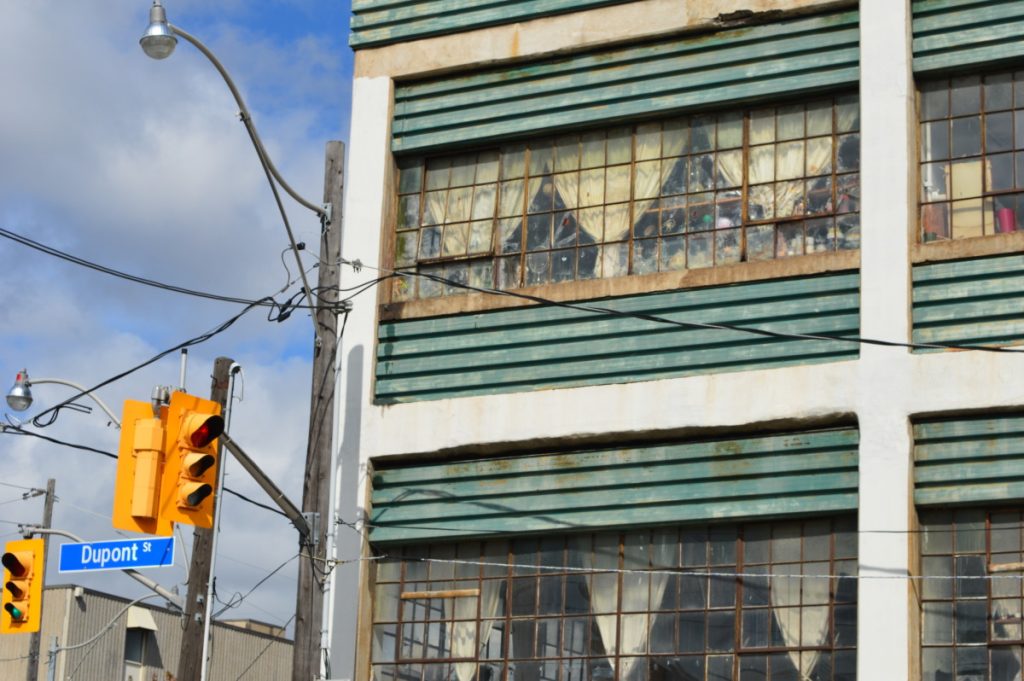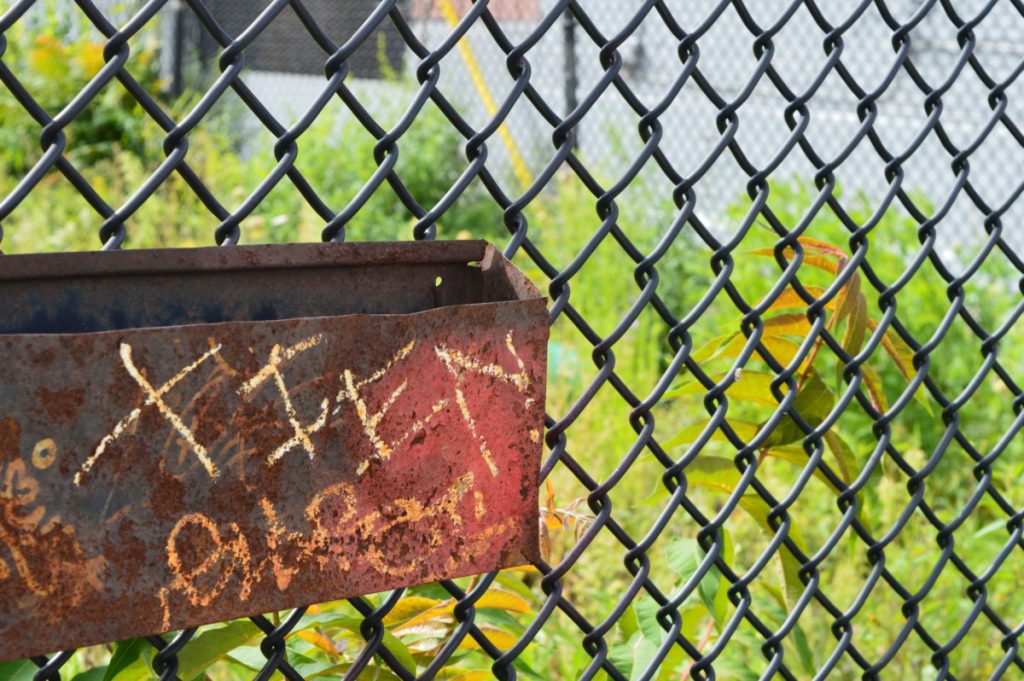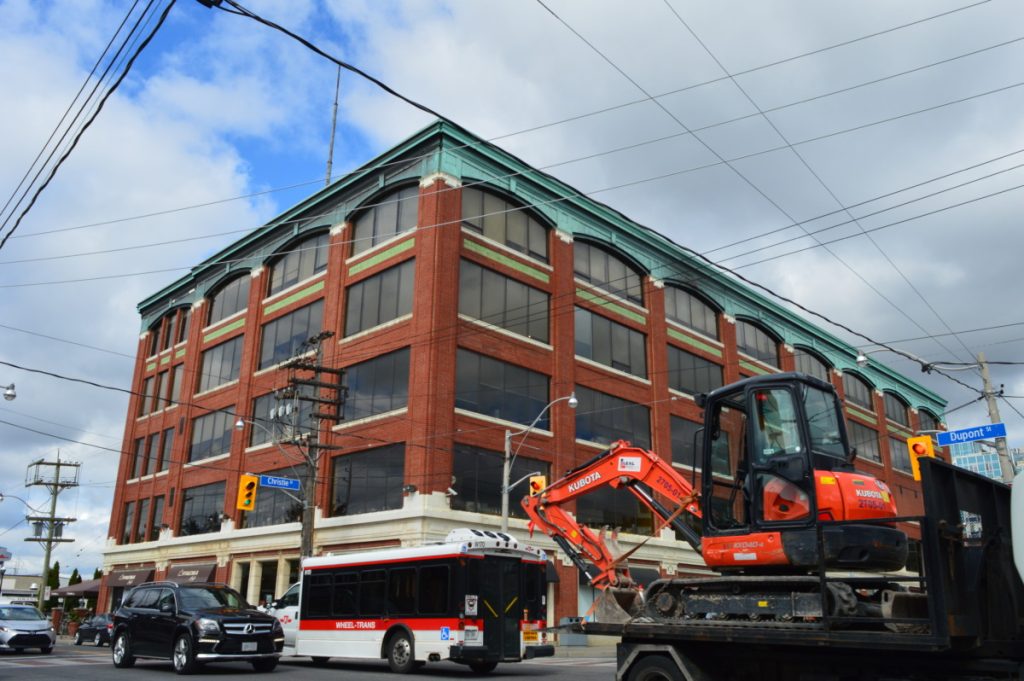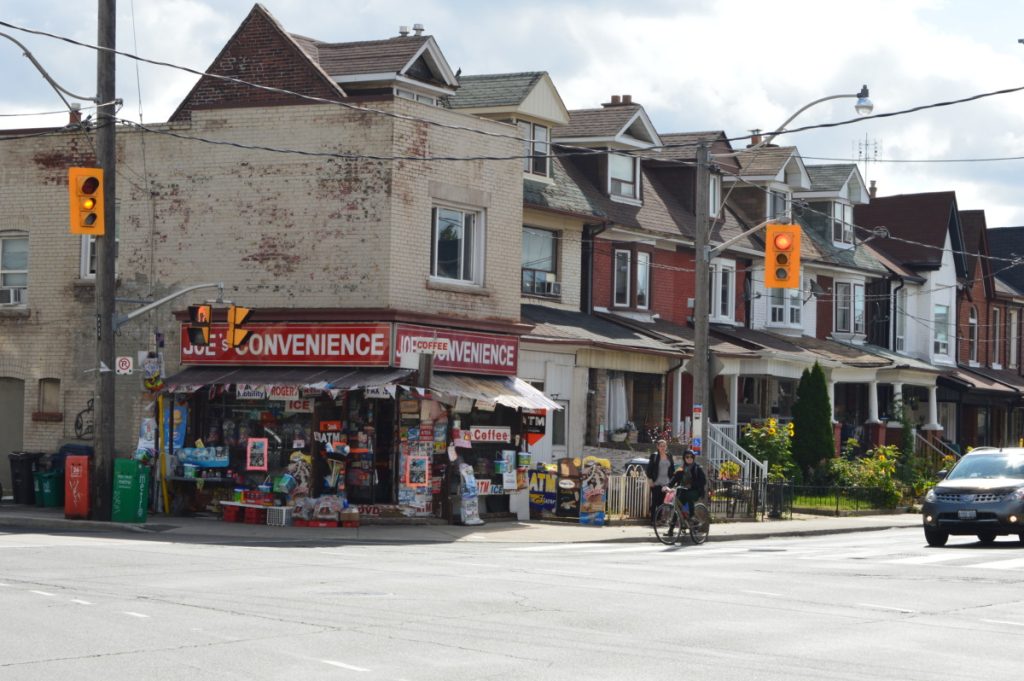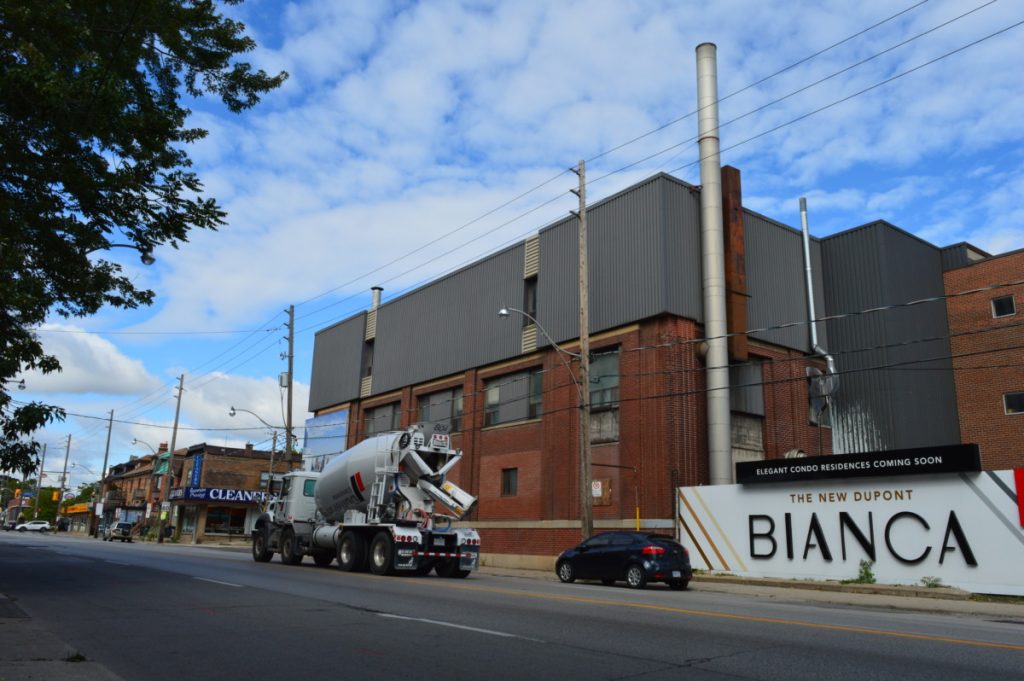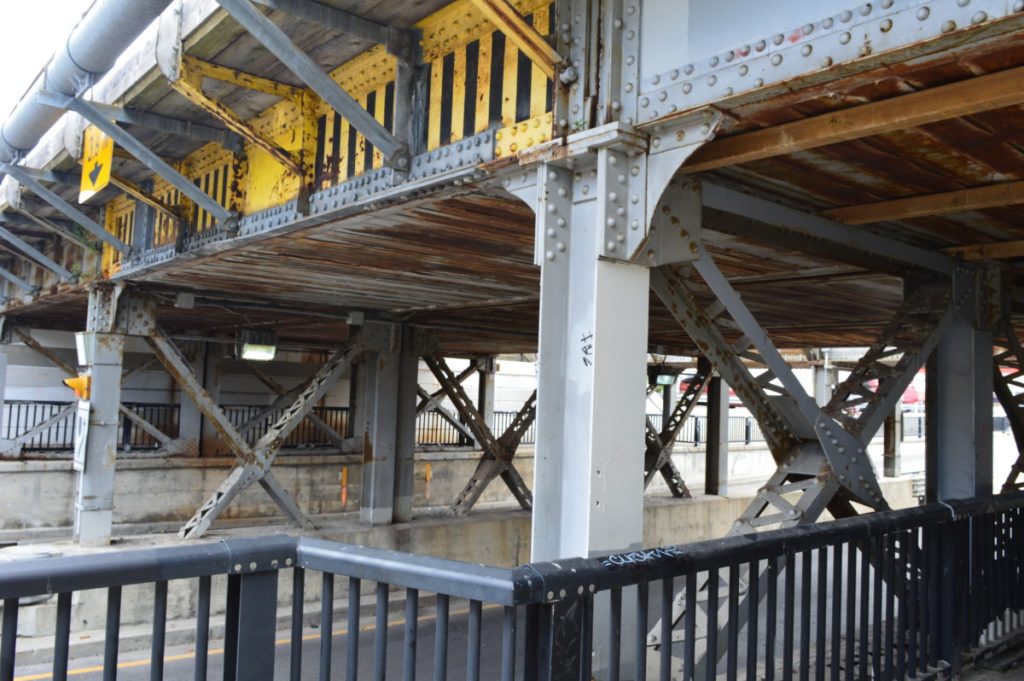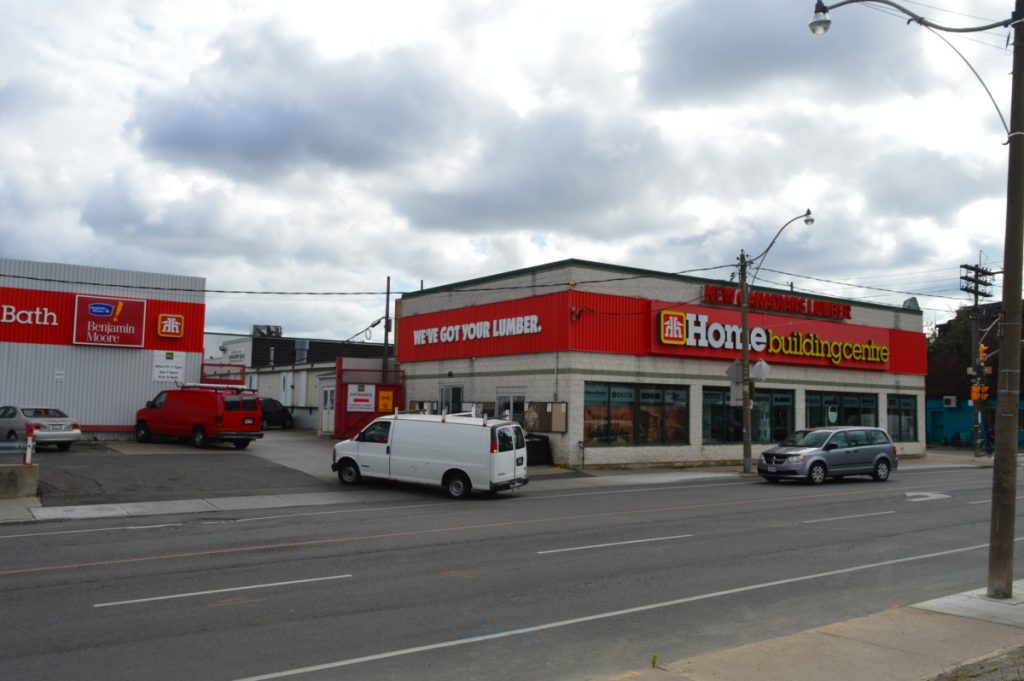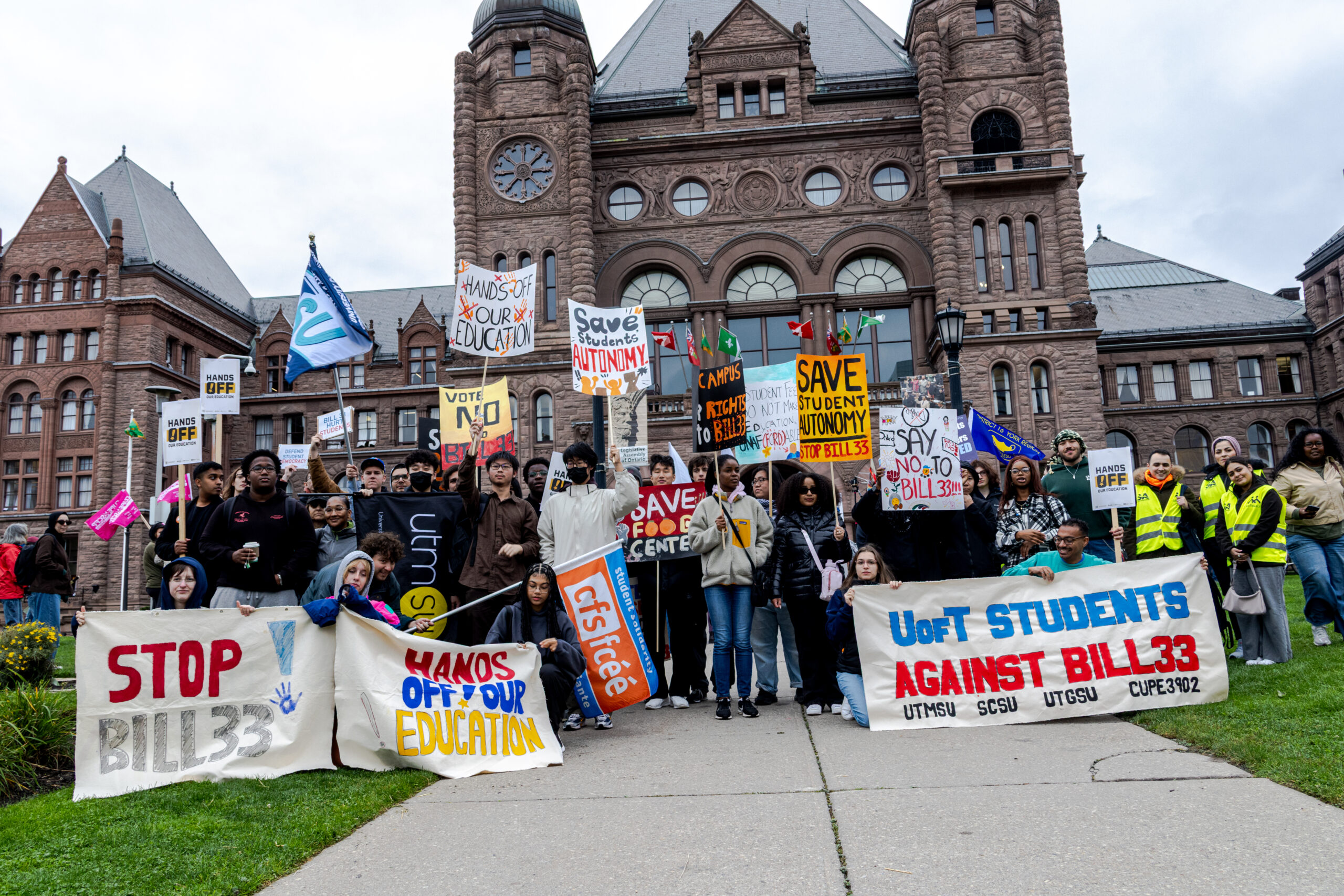Former industrial neighbourhood now has a mixed-use character
Though unglamorous and utilitarian, Dupont Street has always had a key position in Toronto’s economy. And as development signs indicate, the street is about to enter the era of the condo.
Councillor Joe Cressy grew up around Dupont Street and now he has it in his ward.
“I think it’s fair to say that its industrial character as it existed 30 years ago doesn’t exist today,” he said. “And that’s why we’ve seen a number of different industrial sites including at 420 Dupont St., where the Bianca development is coming, that have been in a state of disrepair and inactivity for years.”
Located just south across the railway tracks from George Brown’s Casa Loma campus, Dupont Street was a key industrial engine in early Toronto and continued to be a manufacturing area. Indeed George Brown’s presence here is a continuation of that history.
Cressy points out that “the mixed-use designation it permits all forms of uses.” and this makes sense as the area already has a mixed-use character.
“You don’t want a city to be a giant bedroom you want it to be a place where people can live and work in the same spot,” said Shawn Micallef, the editor of Spacing magazine and author of Toronto history book Frontier City. “And, hopefully walk between those two places.”
The industrial zoning for the area north of Dupont has been partly bypassed in an informal manner further to the west, with an old industrial building at Ossington and Dupont used as loft residences for many years despite being leased specifically as artist studios. Pop-up stores by hipster staples like Frank and Oak are occupying the large warehouse at Dovercourt and Dupont, near the trendy mecca of Geary Avenue with its microbreweries and record stores co-existing with the old neighborhood Portuguese fish store, bakery and auto-repair shops.
Dupont Street is even name-dropped in Brave Shores indie hit More like You.
There’s a definite movement away from manufacturing and towards condos, retail, and service sector.
The area is still a bit gritty, but the industrial focus has lessened and shifted from manufacturing to construction. You can rent power operated lifts and buy lumber at New Canadians and there are always cement trucks driving by. Today, Dupont Street acts as a kind of logistical centre for construction industry.
According to a city demographic study of the area, the area has a disproportionate number of young people between the age of 20-34, with 32.5 per cent of the population compared which is 9.7 per cent more than the city as a whole.
Most of the development proposals have now have all settled with the city. Developers have been trying, as they usually do in Toronto, for higher towers with more condos. The city and the neighbourhood residential council for their part are arguing for lower towers and more contributions to community amenities.
“The horse trading for height versus community benefits, and these things are always in play,” said Micallef.
These condos will take over over old factories, the beer store and will replace the current Sobeys with a new one with a condo tower.
Cressy stressed that, with the support of the community, they were pushing for “fine-grained retail” on grade for the towers, which means smaller stores, not just big box.
As density rises along Dupont Street, Micallef points out that there are benefits for students and staff at Casa Loma campus.
“The more people that live there, you see the strip getting more interesting commercial activity, so from a student life perspective it might be more interesting for the Casa Loma campus folks.”
CORRECTION: The lofts mentioned in the article are in fact located at Ossington Avenue and Dupont Street, not Davenport. The Dialog regrets the error.
Above photos of Dupont Street by Megan Kinch / The Dialog




